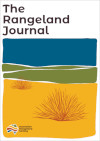RJ23052The importance of camel (Camelus dromedaries) in the livelihoods of herders: the case of camel herders’ households in peri-urban N’Djamena and pastoral Fitri, Chad
Owing to its multiple functions and ability to live in harsh environments, camel is now getting renewed interest from pastoral societies in the context of climate change. Our survey of two groups of nomads in central Chad showed that camel herding is spreading throughout the country and not only in the Saharan zone. Camel plays a crucial role as a source of cash income and as a supplier of meat and dairy products for pastoral households and urban markets.





